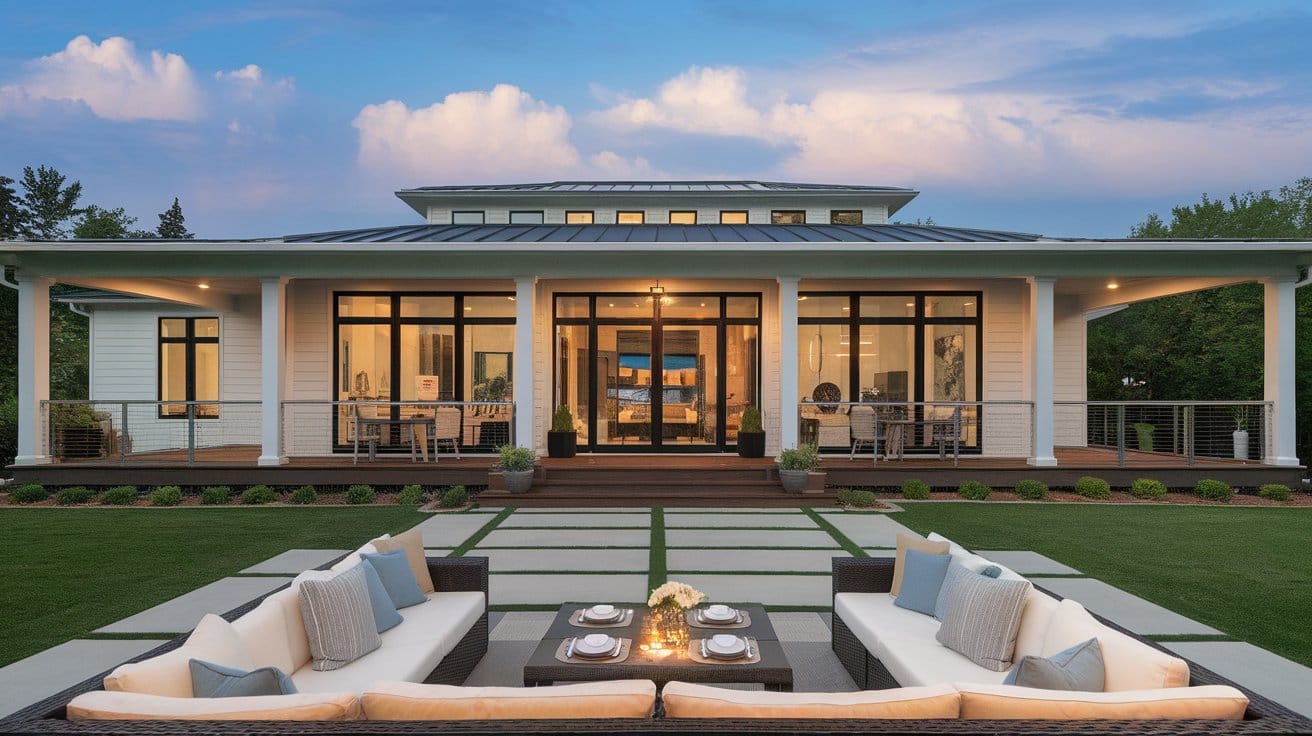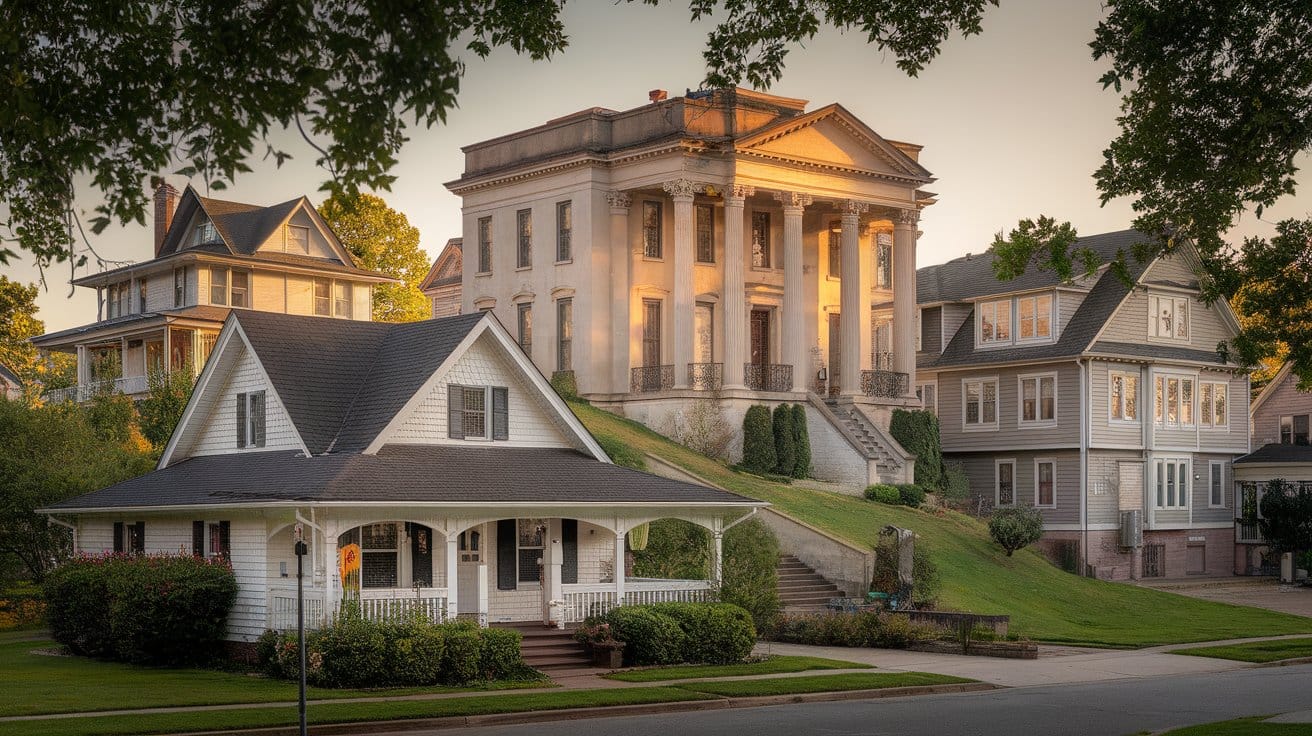Introduction
Building a home in a flood zone requires careful planning and design to ensure safety and durability. Flood zones present unique challenges, but with the right house plans, it’s possible to create a dream home that can withstand extreme weather conditions. Whether you’re designing an elevated house or selecting flood-resistant materials, understanding the impact of flood zones on home designs is crucial. By integrating flood protection solutions, such as piles, columns, and reinforced materials, homeowners can protect their investments while still enjoying a beautiful, functional living space.
Choosing the right house plans for your area involves working closely with engineers and reviewing FEMA flood zone maps to determine the appropriate base flood elevation. Customizing floor plans for flood zones not only ensures safety but also allows you to create a space that reflects your lifestyle and preferences. With the right approach, building a home in a flood-prone area can be a rewarding and secure experience.
Key Takeaways
- Elevated house designs are essential for building in flood zones, ensuring homes stay above the base flood elevation.
- Flood zone maps and FEMA guidelines help determine the safest and most effective house plans for each area.
- Customizing flood zone house plans allows homeowners to integrate safety features while still achieving their dream home.
- Piles, columns, and flood-resistant materials like concrete and steel are critical for long-term protection in flood-prone areas.
- Working with engineers ensures that homes are designed to withstand the specific challenges of the flood zone.
- Building a home in a flood zone is possible with the right planning, materials, and understanding of local building codes.
Understanding Flood Zones and How They Affect House Designs

When planning to build a home in a flood zone, understanding how flood zones impact house designs is critical. Flood zones are areas with different levels of flood risk, and each zone requires specific building plans to ensure the safety of the structure. Elevating the home is a typical design solution, especially in areas prone to floods. Whether you’re looking at flood zone house plans or custom designs, it’s essential to explore the most appropriate materials and construction methods. FEMA flood maps can help determine the base flood elevation for the house, making sure it meets safety standards.
The Importance of Elevating House Designs in Flood Zones
In flood-prone areas, elevating house designs is one of the most important considerations. The elevation ensures that the home stays above the base flood elevation, which minimizes damage from rising waters. By using materials like reinforced concrete, the structure can withstand extreme weather. FEMA regulations often dictate the necessary height for homes in various flood zones, ensuring long-term protection. Elevated house plans offer homeowners the opportunity to design custom homes that provide safety without sacrificing aesthetics.
How Flood Zone Maps Help Determine House Design Features
Flood zone maps are critical tools for determining how to design and build in flood-prone areas. These maps, often provided by FEMA, indicate the likelihood of flooding and the necessary elevation for homes in each zone. Builders and homeowners must consider these maps when reviewing house plans, as they determine the base flood elevation (BFE). Adhering to BFE requirements ensures the home is built to withstand potential floodwaters and meet federal safety standards. Furthermore, using the correct house design can increase a property’s resilience to future flood events.
Key Considerations for Flood Zone House Plans
1. Elevation Above Base Flood Level
Ensuring your home is elevated above the base flood level is critical to prevent flood damage. Elevated house plans often use piles or columns to raise the structure, allowing water to flow underneath during floods.
2. Using Flood-Resistant Materials
Flood-resistant materials like concrete, steel, and treated wood are essential in flood zone construction. These materials provide durability and can withstand the forces of water and hydrostatic pressure.
3. Reviewing FEMA Flood Maps
FEMA flood maps help determine the flood risk in your area and are crucial when designing your home. They provide information on base flood elevations, which is key for deciding the height at which to build.
4. Customizing House Plans for Your Area
Custom house plans for flood-prone areas include elevated living spaces, reinforced walls, and open ground floors that allow water to pass through without causing damage to the home.
5. Consulting with Engineers
Working with engineers ensures your house plans meet all safety and structural requirements. Engineers can help design flood-resistant homes that comply with local building codes and FEMA standards.
6. Selecting the Right Foundation Type
Choosing the right foundation type is crucial in flood zones. Raised foundations, such as pile or column-based designs, offer the necessary support and protection from floodwaters.
Choosing the Right Flood Zone House Plans for Your Area

Selecting the right house plans for flood zones in your area involves reviewing both the risk level and building requirements. Each zone may dictate different building elevations, floor plans, and structural features. Elevated house plans for floods are often necessary in coastal regions where storms are frequent. Homebuilders need to assess these critical factors to avoid future issues, like hydrostatic pressure. Using elevated floor plans not only protects the home but also offers a dream living space with safety in mind. Be sure to get in touch with a licensed engineer to review your flood zone requirements.
Customizing Floor Plans for Flood Zone Areas
Customizing floor plans for homes located in flood zones is essential to ensure both safety and comfort. Elevated house plans for flood protection often involve raising the main living area, leaving space below for floodwater to flow freely. Builders typically use columns or piles to support the home, providing both durability and protection. In flood-prone zones, customizing these designs allows homeowners to integrate their dream features while still complying with FEMA and local building codes. This approach ensures that both lifestyle and safety are prioritized.
Working with Engineers to Review Flood Zone Requirements
Before settling on a house plan, it’s crucial to work with an engineer to review the specific requirements for your flood zone. These professionals use flood zone maps and other tools to calculate the necessary elevation and structural reinforcements needed to meet building codes. Engineers ensure that house plans for flood zones are tailored to the exact requirements of the area, taking into account factors like hydrostatic pressure, water flow, and potential storm surges. Proper planning with engineers can prevent costly mistakes and provide peace of mind for homeowners.
Case Study: Flood-Resistant Home in Coastal Virginia
In 2021, a family in Coastal Virginia faced the challenge of building a new home in a high-risk flood zone. With frequent hurricanes and rising tides, the area required special attention to flood-resistant design. The family worked with a local engineer and builder to create an elevated house plan that would protect their home from future flooding.
The house was designed with a raised foundation supported by concrete piles, ensuring it was well above the base flood elevation required by FEMA. The builders also used reinforced concrete and steel materials to provide additional structural support. Flood-resistant windows and doors were installed to prevent water intrusion during storms. The family incorporated an open ground level to allow floodwaters to pass through without causing damage to the home. This design not only met FEMA regulations but also provided the family with peace of mind during hurricane season.
Elevating Your Home: House Plans for Flood Protection

Flood protection is essential when designing a home in flood-prone areas. Elevated house plans for flood-prone zones ensure the structure is built above the base flood elevation. A common solution includes elevating the house on piles or columns to withstand storm surges and water flow. Custom home designs offer flexibility, allowing homeowners to integrate flood-resistant materials and build a home suited for their specific environment. Recent years have seen an increase in the importance of elevated floor plans as a way to safeguard against rising waters and climate change’s growing impact.
Piles and Columns: The Key to Elevated House Plans
Piles and columns are key elements in elevated house plans, providing the necessary support for homes built in flood-prone areas. These structures lift the home above the base flood elevation, offering protection against high water levels during extreme weather events. Elevated house plans using piles or columns allow for the free flow of water beneath the home, minimizing structural damage. This design is not only practical but also a customizable solution, enabling homeowners to select materials and layouts that match their vision for a flood-proof home.
Integrating Flood-Resistant Materials in Elevated Home Designs
To create a flood-proof home, integrating flood-resistant materials into the house design is crucial. Materials like concrete, steel, and treated wood provide the necessary durability to withstand the forces of floodwater and hydrostatic pressure. In flood zones, the use of these materials in the construction of elevated homes ensures the long-term resilience of the structure. Homeowners can also select materials that are resistant to mold and moisture, safeguarding their investment from water damage and ensuring a safe living environment.
Building a home that stands strong against floods is not just about materials; it’s about understanding the land, the weather patterns, and designing a space that protects while embracing the environment. — Richard Hawke, Flood Zone Architecture Specialist
Building a Dream Home in a Flood Zone: Solutions and Materials

Building a dream home in a flood zone requires careful consideration of materials and design solutions. Flood-resistant materials, such as concrete and steel, are often used to strengthen the home against the forces of nature. Homeowners must work closely with builders and engineers to ensure that the structure meets FEMA flood protection standards. Selecting the right type of foundation is crucial—whether it’s a raised frame or block foundation—providing the home with the stability it needs during floods. Designing and building a flood-proof home is not only possible but can also lead to a premium lifestyle in previously vulnerable areas.
Selecting the Right Foundation for Flood Zone Homes
When building a dream home in a flood zone, selecting the right type of foundation is essential. Raised foundations, such as pile, block, or column-based designs, provide the stability and elevation needed to protect the home from rising waters. These foundation options also reduce the risk of hydrostatic pressure damaging the structure during floods. It’s important to choose a foundation that meets both the aesthetic desires of the homeowner and the flood zone’s safety requirements. Proper foundation selection helps ensure the home’s resilience in extreme conditions.
Why Concrete and Steel are Ideal for Flood Zone House Construction
Concrete and steel are ideal materials for building homes in flood zones due to their strength and durability. These materials can withstand the force of floodwaters and remain structurally sound, even during extreme weather events. Steel frames and concrete foundations help protect the home from hydrostatic pressure, ensuring long-term safety. Additionally, both materials are resistant to moisture, mold, and rot, making them an excellent choice for flood-proof home designs. Homeowners looking to build their dream home in a flood zone often rely on these materials for peace of mind.
Conclusion
Designing and building a home in a flood zone can be challenging, but with the right planning and materials, it’s possible to create a flood-resistant structure that offers both safety and comfort. Elevated house plans, reinforced foundations, and flood-resistant materials like concrete and steel ensure your home can withstand rising waters and extreme weather events. By working closely with engineers and understanding your flood zone’s specific requirements, you can build a home that not only meets safety standards but also fulfills your vision of a dream home.
Ultimately, selecting the right house plans and materials for a flood zone is a critical step in safeguarding your property. With the right foundation and construction methods, you can confidently build a home that will stand the test of time, even in areas prone to flooding. Protecting your investment while creating a beautiful, functional living space is achievable with thoughtful design and careful execution.






